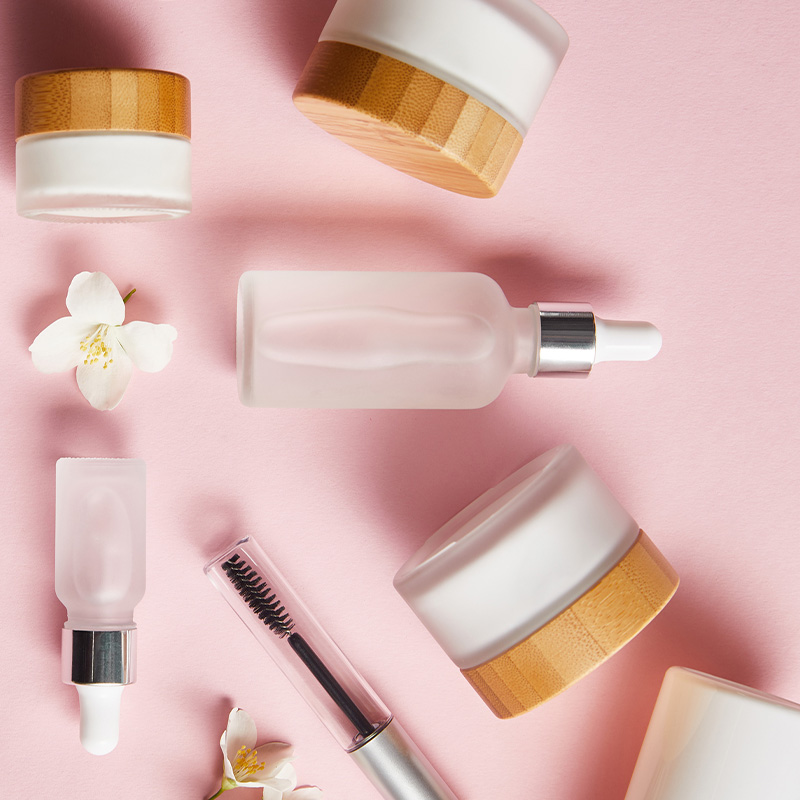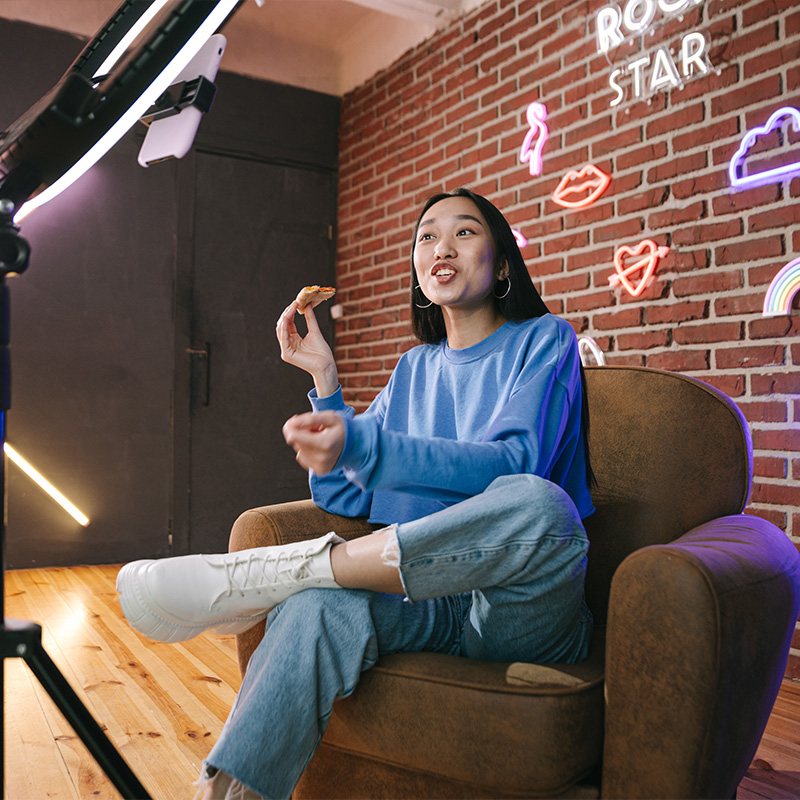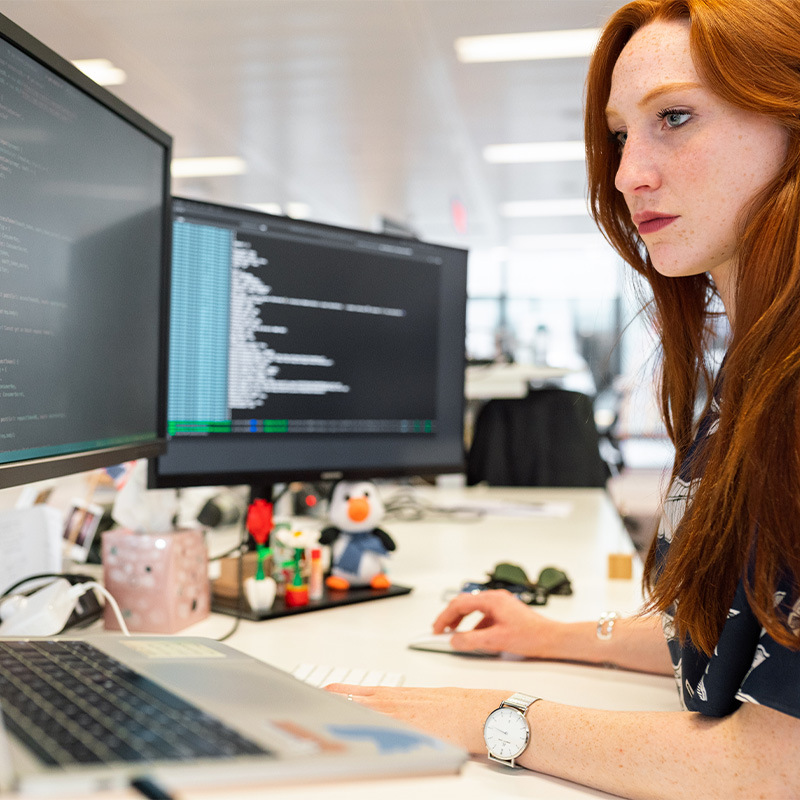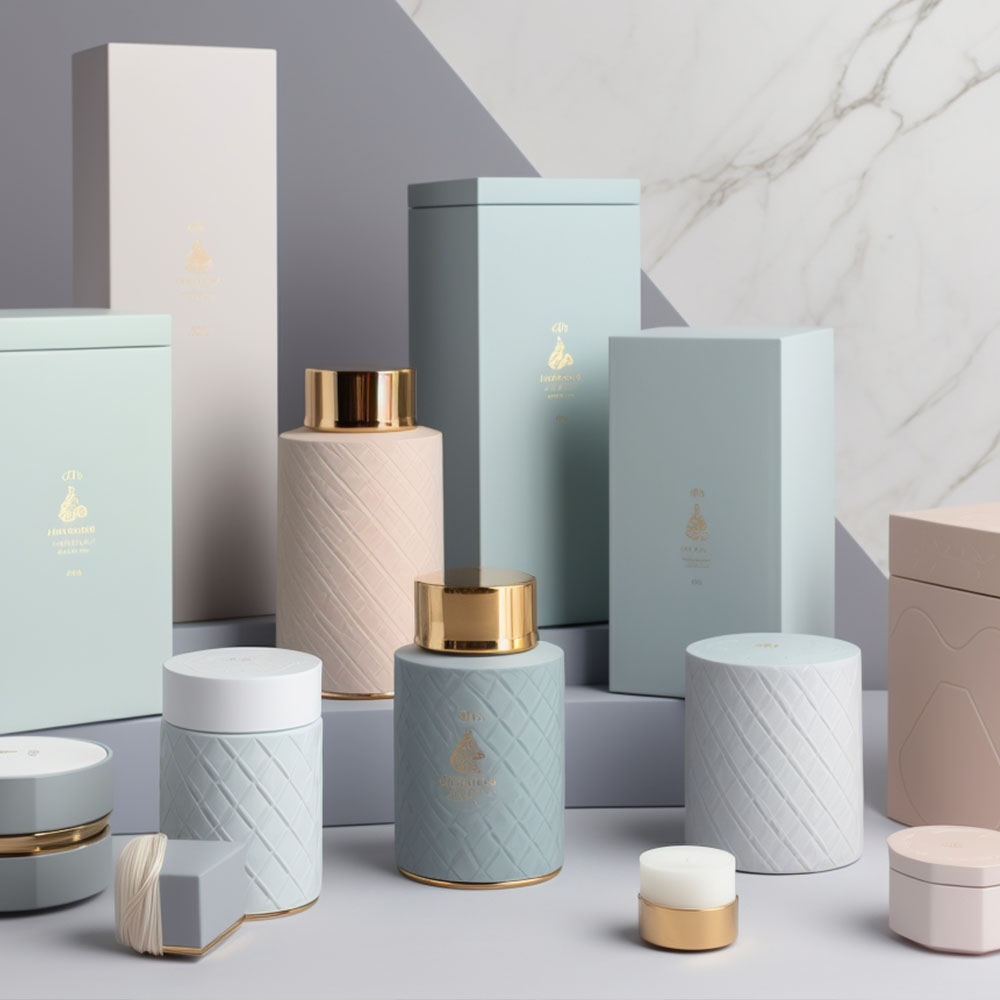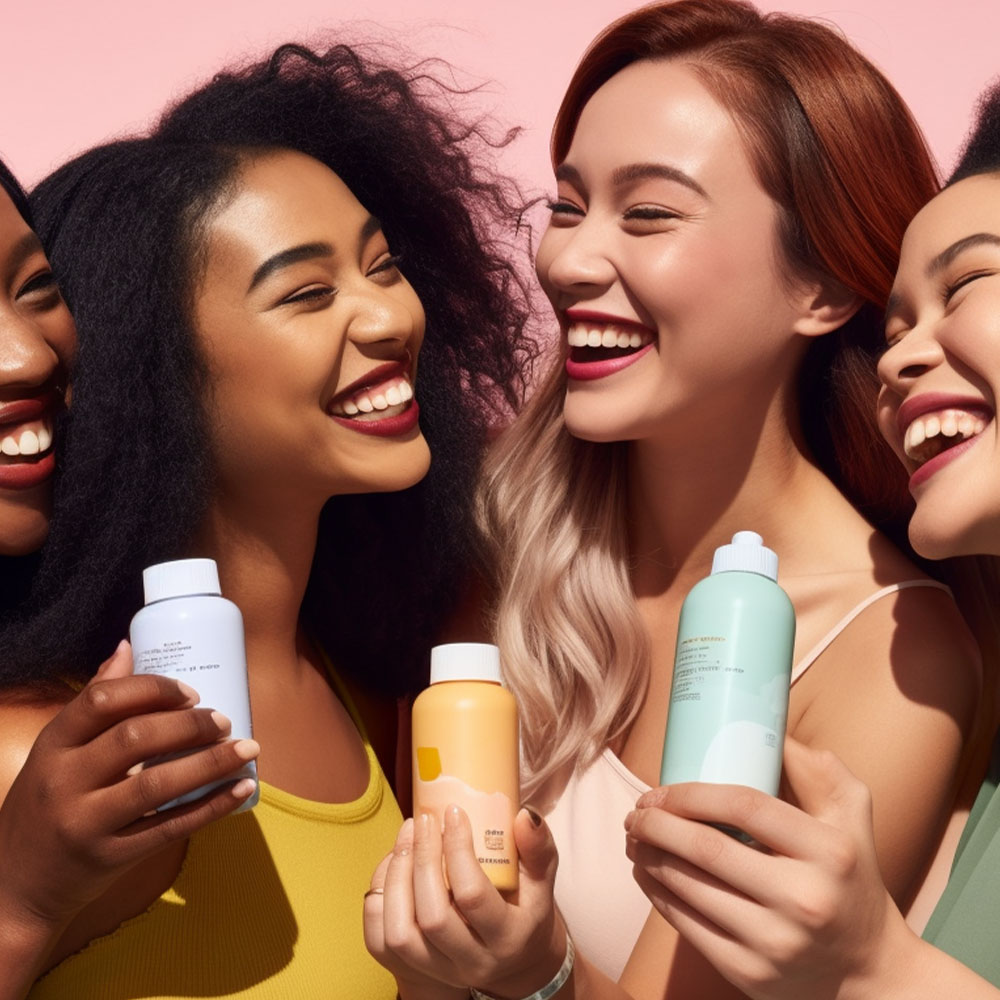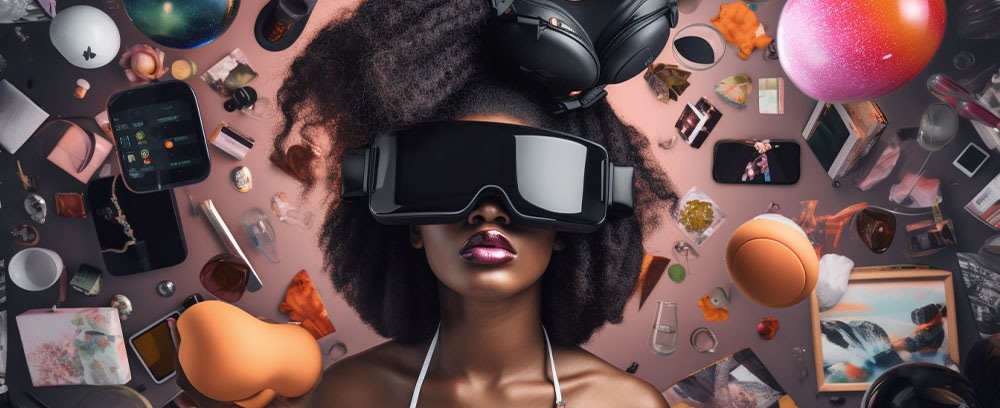
Virtual reality has been a buzzworthy topic for several years now, with its potential to revolutionize various industries. One such industry is beauty brand marketing, where virtual reality experiences are becoming increasingly popular in engaging and satisfying customers’ needs. By blending the digital world with physical products, brands can create unique and immersive experiences allowing consumers to try makeup virtually or experiment with new hairstyles without ever leaving their homes.
Beauty brands need to keep up and adapt as consumer expectations evolve. Virtual reality allows them to do just that by providing an innovative solution that resonates with today’s tech-savvy audience. With VR technology rapidly advancing, it’s no surprise that more and more beauty companies are jumping on board this trend to offer exciting and interactive experiences to their customers. In this article, we will explore the rise of virtual reality in beauty brand marketing and how it’s changing the game for traditional strategies.
The Evolution Of Beauty Brand Marketing
Imagine a world where beauty brands relied solely on TV commercials and print ads to sell their products. It’s hard to fathom now, as the evolution of marketing has brought about game-changing strategies that have transformed the industry. The introduction of social media influencers paved the way for influencer marketing strategies, revolutionizing how consumers interact with beauty brands.
Influencers took over platforms like Instagram and YouTube, showcasing their makeup skills and featuring various beauty products in their posts. These individuals quickly gained credibility among followers who trusted their product recommendations. A single post from an influential figure could drive sales through the roof, propelling previously unknown products into mainstream popularity.
However, as quickly as they rose to power, traditional influencer marketing began to lose effectiveness. Consumers grew tired of sponsored content and realized that not all influencers had honest intentions when promoting specific products. As a result, beauty brands needed something new – something innovative – to capture consumer attention again.
Enter virtual reality (VR) technology: a revolutionary tool taking the beauty industry by storm. Brands are using VR experiences to allow customers to test makeup looks before committing to a purchase. This immersive experience allows them to see precisely what shades will look best on their skin tone without stepping inside a store or buying blindly online.
The evolution of beauty brand marketing continues at breakneck speeds thanks to advancements in technology, such as social media influencers and virtual reality experiences. As we progress, it’s exciting to think about what other innovations may be waiting around the corner.
The Emergence Of Virtual Reality Technology
As discussed in the previous section, beauty brand marketing has come a long way. However, with the emergence of virtual reality technology, we now see even more innovative and exciting ways that brands can connect with their customers.
Virtual reality advancements have allowed consumers to test products without ever leaving their homes before buying them. This is especially valuable for those looking to try new makeup or skincare products but cannot visit a physical store. In addition, with increased adoption in industries beyond gaming, such as education and healthcare, it’s clear that virtual reality is here to stay.
In addition to product testing, virtual reality allows brands to create immersive customer experiences. For example, Sephora launched its Virtual Artist app, which uses augmented reality technology to allow users to try on different makeup looks virtually. Similarly, L’Oreal Paris created a VR experience called “The Beauty Squad,” where users could go behind the scenes at fashion week and interact with top beauty influencers.
Overall, the rise of virtual reality in beauty brand marketing offers endless possibilities for brands looking to engage with their audience in new and exciting ways. As this technology continues to evolve and become more accessible, we can expect even more innovative uses within the industry. It’s an exciting time for both marketers and consumers alike!
With all these opportunities available through virtual reality technology, it’s clear that forward-thinking beauty brands will need to embrace this trend if they want to remain competitive in today’s market. Furthermore, by leveraging this cutting-edge tech creatively – whether via apps or interactive pop-ups – brands can give themselves an edge when engaging audiences who crave innovation and fresh ideas.
The Benefits Of Virtual Reality In Beauty Brand Marketing
For a good reason, virtual reality has been making waves in the beauty industry. It offers many benefits that can help increase brand differentiation, enhance customer experience, and ultimately increase sales.
One significant advantage of virtual reality is its ability to provide consumers with an immersive experience. Using VR technology, beauty brands can transport their customers into a completely different world where they can interact with products and explore new looks. This level of engagement creates a memorable experience and encourages them to stay longer on your site or social media page.
Another benefit of virtual reality is consumer convenience. Instead of physically going to stores or salons, customers can now try various makeup styles from their homes. This means they no longer have to worry about scheduling appointments or wasting time commuting to test out a product.
By providing this convenience, brands can build customer trust and create stronger connections. In addition, through VR, companies can showcase how certain products work without needing physical testing- which leads us to our next point: enhanced customer experience.
Virtual reality allows beauty brands to present their products in previously impossible ways through traditional marketing methods such as commercials or print ads. For example, customers can see firsthand how certain makeup shades look against their skin tone or how skincare serums penetrate deep into pores – all thanks to VR simulations.
In conclusion, virtual reality is one of the most innovative tools available for beauty brand marketing today. Its ability to increase brand differentiation, offer consumer convenience, and enhance customer experiences has opened up new possibilities for growth and success within the industry. As more brands adopt this technology, we expect it will become even more commonplace in years to come!
Creating Unique And Immersive Experiences
Interactive branding has become a buzzword in beauty brand marketing, and for a good reason. It allows companies to create unique and immersive experiences that engage customers on a deeper level than traditional advertising methods. With virtual reality technology, brands can now take interactive branding to the next level by allowing consumers to experience their products entirely new.
One example of this is through immersive product demos. By creating virtual environments where consumers can try out different makeup looks or skincare routines, brands can give them an idea of what it feels like to use their products without being there physically. This saves time and provides a more personalized experience for each customer.
Virtual reality also allows for customization options that were previously impossible. For instance, if someone wants to see how they would look with purple lipstick, they could select that color option within the VR environment instead of purchasing and testing multiple lipsticks. This type of personalization adds value and convenience for potential customers.
Overall, the rise of virtual reality in beauty brand marketing presents exciting opportunities for brands looking to differentiate themselves from competitors. Interactive branding and immersive product demos provide memorable experiences that resonate with audiences and drive sales. As technology advances, we can expect even more innovative ways for brands to connect with consumers using virtual reality.
Virtual Makeup Try-Ons
Virtual Makeup Try-Ons: The Future of Beauty Brand Marketing
In today’s digital age, consumers demand more personalized and interactive experiences from their favorite brands. Virtual reality has become a powerful tool for beauty companies to provide just that. With realistic renderings and cutting-edge technology, virtual makeup try-ons are revolutionizing how we shop for cosmetics.
Realistic Renderings: One of the most significant benefits of virtual makeup try-on is seeing how different products look on your face without applying them in real life. By using advanced algorithms and machine learning, these technologies can accurately map out facial features and create an ultra-realistic rendering of what you would look like with a particular product or shade.
Personalized Recommendations: Another advantage of virtual makeup try-on is receiving personalized recommendations based on skin type, tone, and preferences. Some platforms even allow you to upload a photo of yourself so that the software can analyze your unique characteristics and suggest products that will work best for you.
The possibilities are endless when it comes to virtual makeup try-on. As technology evolves, we can expect more innovative features such as augmented reality overlays, voice-activated commands, and social media integration. Beauty brands that embrace this new frontier can connect with customers in exciting ways and stay ahead of the curve.
Virtual makeup try-ons significantly shift how we interact with beauty products. Gone are the days of guessing which shade or formula will suit us best – now, we can see precisely how a product will look before making a purchase. As more consumers become aware of this game-changing technology, we can anticipate its widespread adoption across all aspects of beauty marketing.
Virtual Hairstyling
Virtual Hairstyling:
One of the most exciting aspects of virtual reality in beauty brand marketing is the ability to simulate hair styling in real-time. With advanced technology, users can see themselves virtually wearing different hairstyles before committing to a new look. This feature allows customers to experiment with various styles and colors without long-term consequences.
In addition to experimenting with different looks, virtual hairstyling offers personalized recommendations based on facial features, skin tone, and personal preferences. By inputting this information into the virtual reality software, users receive customized hairstyle options tailored specifically to them. This level of personalization not only enhances the user experience but also increases customer satisfaction.
Moreover, virtual hairstyling allows beauty brands to showcase their products uniquely. By partnering with VR companies or developing their own VR technology, they can create immersive experiences that allow consumers to try out different products and styles within a digital environment. This innovative marketing approach captures attention and demonstrates how the product works in action.
Virtual hairstyling is just one example of how virtual reality has revolutionized the beauty industry. The technology allows real-time simulations and personalized recommendations while providing a platform for brands to showcase their products engagingly. As we continue to push boundaries with VR technology, it will be interesting to see what creative ways beauty brands can connect with consumers.
Consumer Engagement And Satisfaction
We’ve seen a fundamental shift in consumer engagement in recent years, and virtual reality is the perfect way to deliver an immersive experience. By creating personalized content tailored to individual customers, VR allows brands to create a more interactive and engaging relationship. In addition, through VR, brands can allow customers to interact with the product excitingly and uniquely, creating a stronger connection to the brand and, ultimately, better customer satisfaction. As a result, VR has become a powerful tool for beauty brand marketing, creating an entirely new engagement level and offering customers a truly unique experience. By creating engaging, personalized content and allowing customers to interact with the products, virtual reality is revolutionizing how brands reach customers and build relationships.
Immersive Experiences
Immersive experiences are becoming crucial to consumer engagement and satisfaction in the beauty industry. With the rise of gaming and virtual reality (VR), brands have created unique experiences that transport consumers into different worlds, allowing them to interact with their products like never before. By incorporating VR technology into their marketing strategies, beauty brands can provide customers with immersive experiences that showcase their products’ potential benefits and features.
VR is used in the beauty industry by creating virtual makeup tutorials. With this technology, customers can test various makeup looks without physically applying any product. This saves time and helps build brand loyalty as it provides an interactive experience for customers. Brands such as Sephora have already implemented VR makeup tutorials in select stores, providing an innovative shopping experience for their customers.
Another area where VR makes waves in the beauty industry is travel retail. Travelers often look for new ways to pass the time while waiting at airports or during long flights. Beauty brands are leveraging this opportunity by offering VR experiences that allow travelers to explore exotic locations and try out different products from the comfort of their seats. These immersive experiences help passengers relax and relieve stress while promoting specific products.
In conclusion, immersive experiences through VR are changing how beauty brands engage with consumers and dramatically increase customer satisfaction. As VR grows, we will likely see more creative uses emerge within other areas of the beauty industry – from skincare routines to hair styling guides. The possibilities are endless when it comes to using technology creatively in marketing strategies, ultimately leading to more satisfied and loyal customers who appreciate innovation blended with quality products!
Personalized Content
Nowadays, consumers expect more than just a product from beauty brands; they want personalized experiences tailored to their unique needs and preferences. This is where customized recommendations and individualized experiences come in – offering customers exceptional engagement that fosters brand loyalty.
Virtual reality technology has opened up new possibilities for delivering these personalized experiences. By leveraging VR, beauty brands can create immersive environments that cater to each customer’s specific interests and desires. For example, a consumer may be interested in learning how to style their hair with the latest products or seeking advice on skincare routines based on their skin type. With VR, brands can offer interactive tutorials that address those same concerns.
VR also promotes inclusivity by providing customers with options outside traditional marketing strategies. For example, beauty brands can now offer virtual makeup simulations to all individuals regardless of age, gender identity, or race – promoting diversity in representation and accessibility.
Ultimately, personalized content through VR enhances the overall satisfaction levels of consumers as it provides them with an experience aligned with their expectations while fostering connections between the brand and its clients. As we explore innovative ways to engage our audiences better, it’s exciting to see how personalization will shape the future of beauty industry marketing strategies.
Customer Interaction
As the beauty industry evolves, customer interaction has become essential to consumer engagement and satisfaction. Today’s consumers expect more than just a product from their favorite brands; they want personalized experiences tailored to their unique needs and preferences. This is where interactive demonstrations and virtual consultations come in – offering customers exceptional engagement that fosters brand loyalty.
Virtual reality technology has opened up new possibilities for delivering these personalized experiences. By leveraging VR, beauty brands can create immersive environments that cater to each customer’s specific interests and desires. In addition, with interactive demonstrations, customers can have hands-on experiences with products before purchasing them, increasing satisfaction levels as they feel confident in their buying decisions.
Moreover, virtual consultations allow customers to receive professional advice without leaving the comfort of their homes – making it convenient for those unable or unwilling to visit physical stores. Beauty brands can now connect with clients anywhere globally through online platforms, promoting inclusivity by providing equal opportunities for all individuals regardless of geographical location.
Ultimately, customized recommendations and individualized experiences through VR enhance the overall satisfaction levels of consumers as it provides them with an experience aligned with their expectations while fostering connections between the brand and its clients. As we explore innovative ways to engage our audiences better, it’s exciting to see how personalization will shape the future of beauty industry marketing strategies. Integrating virtual reality technology into customer interactions is only one example of how innovation can drive consumer engagement and ultimately lead to higher satisfaction rates among beauty enthusiasts worldwide.
Adapting To Changing Consumer Expectations
Metaphorically speaking, the beauty industry has always been a race to stay ahead of consumer expectations. However, to keep up with ever-evolving demands for personalized experiences, virtual reality (VR) technology is becoming increasingly popular among brands. By providing immersive and interactive customer journeys, VR enables companies to create tailored experiences that enhance engagement.
Personalization through VR allows consumers to try on different looks virtually before purchasing. This allows customers to explore new products in real-time without physically trying them on. Brands can also incorporate customization features into their VR experiences by allowing users to adjust colors and textures according to their preferences.
Moreover, enhancing customer experience using VR goes beyond just product trials. Beauty companies are also exploring ways to leverage this technology for educational purposes. For instance, they could use it to provide step-by-step tutorials on skincare routines or makeup application techniques.
Personalization and enhanced customer experience have become critical drivers of success for beauty brands in today’s digital age. As such, incorporating VR technology into marketing strategies is no longer optional but essential. Moreover, with its ability to provide custom-made experiences and foster brand loyalty, it’s only a matter of time before more players join the bandwagon.
By embracing innovative technologies like VR, beauty brands will be better positioned to adapt quickly to changing consumer expectations while delivering exceptional value propositions that resonate with modern audiences.
The Future Of Virtual Reality In Beauty Brand Marketing
The future of virtual reality in beauty brand marketing is looking brighter than ever. With the rise of VR technology, it has become easier for brands to engage with consumers on a deeper level and create immersive experiences that showcase their products. However, while there are many benefits to using VR in beauty marketing, several challenges must be overcome.
One of the main advantages of incorporating VR into beauty brand marketing is its impact on consumer behavior. By allowing customers to experience products virtually before purchasing them, brands can increase engagement and drive sales. Additionally, virtual try-on tools enable users to experiment with different looks without physically applying makeup or skincare products.
However, implementing VR in beauty marketing comes with its own set of challenges. Creating high-quality virtual experiences can be expensive, making it difficult for smaller brands to compete with larger ones. Furthermore, ensuring compatibility across devices and platforms is crucial when developing VR content.
Despite these obstacles, many beauty brands have already started experimenting with VR technology to engage with customers in innovative ways. As a result, experts predict that VR will continue to grow within the industry over the next few years.
In conclusion (oops!), the future of virtual reality in beauty brand marketing holds great promise for both brands and consumers alike. While there may be certain hurdles along the way, those who successfully implement this technology stand to reap substantial rewards through increased customer engagement and loyalty.
Conclusion: The Potential Of Vr To Transform The Beauty Industry
The potential of virtual reality to transform the beauty industry is undeniable. As we have seen, VR has already significantly impacted customer behavior by allowing them to experience products in a more immersive way. This increased engagement can lead to higher conversion rates and brand loyalty.
Furthermore, using VR as a competitive advantage can set brands apart. Companies can attract new customers and retain existing ones by offering unique experiences that cannot be replicated elsewhere. In today’s crowded market, standing out is essential for success.
However, it’s important not to rely solely on technology. While VR can enhance the customer experience, it should never replace personal interactions or human touchpoints. A balance must be struck between innovation and authenticity.
In conclusion, virtual reality has the potential to revolutionize the beauty industry by changing how customers interact with products and brands. By embracing this technology as part of an overall marketing strategy, businesses can differentiate themselves from others while providing exciting and memorable consumer experiences. The future of beauty marketing looks bright, with virtual reality leading the way toward new possibilities and opportunities for growth.
Conclusion
In conclusion, the potential of virtual reality to transform the beauty industry is immense. As consumers continue to demand unique and immersive experiences from their favorite brands, VR offers a solution that meets and exceeds those expectations.
By using VR technology, beauty brands can offer personalized and engaging experiences that allow customers to try on makeup virtually before making a purchase. This increases customer satisfaction, reduces returns, and enhances brand loyalty. With the rise of virtual reality in beauty brand marketing, we are witnessing an exciting evolution in how companies interact with their consumers. The future looks bright for this innovative technology as it reshapes how we think about beauty products and services.
Start building your brand with us today. Click here.


